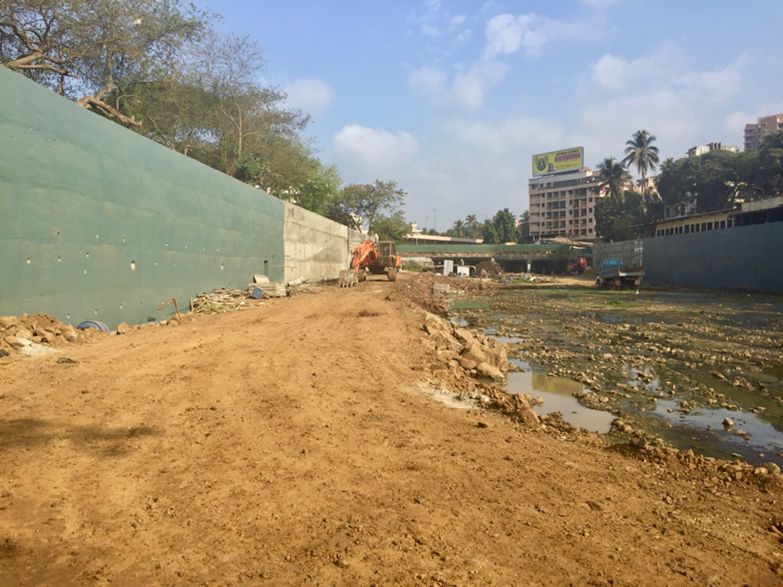Extreme weather and urban rivers
Blog post by V. Chitra
- Created
- 6 Aug 2021, 12:55 p.m.
- Author
- V. Chitra
- DOI
- 10.1177/00420980211023381
Abstract: https://journals.sagepub.com/doi/full/10.1177/00420980211023381#abstract
 Figure 1: River restoration project in Mumbai
Figure 1: River restoration project in Mumbai
On 26 July 2005, about a meter of rain fell in the city of Mumbai over the course of one day. The flood that resulted from this record rainfall claimed over a thousand lives. Studies conducted in the aftermath of the event pointed to two main causes: the first was that the rain itself was the result of a cloudburst releasing an extremely large volume of water in a very short period of time. The second reason was that the city’s dysfunctional drainage system, which was clogged, kept the water from draining out of the city. As a result of these findings, the city’s planning authorities launched a campaign to rehaul the stormwater drains. A major component of the project was to restore the city’s “rivers”, which work as arterial connectors in the stormwater system, a hodgepodge of infrastructure and landscape. However, Mumbai was originally an archipelago reclaimed from the sea and it has a primarily estuarine landscape. Why, then, did the authorities call these channels rivers, and what was at stake in the river restoration project? This was the primary question that led to my research on the stormwater drains and the river restoration program.
In 2017, while working on coastal transformations, I became interested in this shift from thinking about Mumbai’s edge as estuarine, with expansive marshes that form a blurry buffer between land and sea, to riverine—as a coastal tract with clearly defined channels that convey water out of the city. My research shows that these imaginaries are deeply intertwined with emergent climate anxieties. Since the 2005 flood, extreme rainfall has become increasingly common, leading to frequent flooding. In order to address these extremes, cities like Mumbai are redesigning their drainage systems. Often, this redesign happens through the introduction of large scale infrastructure, which, in the case of Mumbai, has taken the form of massive pumping stations, dredging and desilting programs that increase the volume of water that channels can carry, and concrete walls that define channel edges. Shifting rainfall metrics are thus reshaping how engineers design and work with drainage systems, driving them to think in terms of narrow, defined channels that can quickly convey water out of the city.
“River restoration” is an umbrella term, which includes concretising the edges, desilting the channels, and installing infrastructure such as pumping stations. These technological solutions to problems caused by extreme weather are not only changing urban ecologies, but are also having a polarising effect on urban land politics. In Mumbai, these programs have displaced numerous informal settlements that, despite evidence to the contrary, are often blamed for the conditions of the city’s channels. As the river restoration program proceeds, it has violent outcomes for the city’s low-income communities who inhabit the land along channel edges. The filled up land becomes valuable real estate, which is earmarked for development or for creating “eco-zones”—plans that greenwash infrastructural interventions.
Mumbai’s stormwater drains are an important example of how cities and city systems are changing as the challenges of extreme weather mount: in cities across the world, drains have to be expanded to accommodate more water to prevent floods, urban heat has to be managed differently, and new infrastructural solutions are proposed to meet problems like water scarcity. While these offer solutions in the short-term, they do not attend to the long-term challenges of the climate crisis. Moreover, the shifting metrics of extreme weather, which manifest in infrastructure design are not benign—they have varied outcomes for different communities that inhabit cities. In Mumbai, estuaries turn into rivers as a result of the new geographical imaginaries that emerge from changing infrastructure, and in the process, intensify deeply entrenched socio-economic asymmetries.
Read the accompanying article on Urban Studies OnlineFirst here.


Comments
You need to be logged in to make a comment. Please Login or Register
There are no comments on this resource.